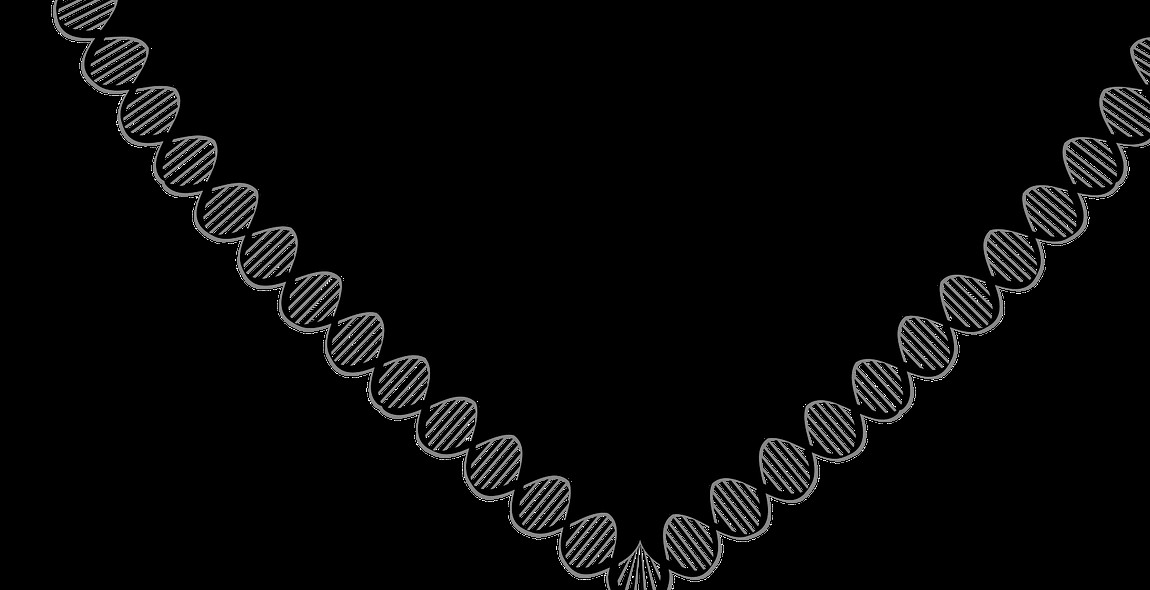The Science of Love: How Biology Influences Attraction
Love is a complex and mysterious emotion that has fascinated humans for centuries. From the ancient Greeks to modern-day scientists, people have been trying to understand the science behind love and attraction. Recent research has shown that biology plays a significant role in how we perceive and react to potential partners.
The Biology of Attraction
When it comes to attraction, our biology plays a crucial role. Our brains release a variety of hormones, including dopamine, oxytocin, and serotonin, that influence our feelings of pleasure, bonding, and happiness. These chemicals can be triggered by various factors, such as physical appearance, pheromones, and even the sound of someone’s voice.
Additionally, our genetics can also affect our attraction to certain traits and characteristics. Studies have shown that people are more likely to be attracted to those who have similar facial features, body shape, and even immune systems.
The Evolutionary Purpose of Love
Love and attraction serve an evolutionary purpose. The desire to mate and reproduce is essential for the survival of our species. Our biology is wired to seek out partners who are healthy, fertile, and genetically compatible.
However, love and attraction are not just about reproduction. They also play a crucial role in forming social bonds and relationships. The release of oxytocin during physical touch and intimacy helps to create feelings of trust and bonding, which are essential for healthy relationships.
The Intersection of Biology and Psychology
While biology plays a significant role in attraction, it is not the only factor. Our experiences, upbringing, and cultural norms also shape our perceptions of love and relationships. The intersection of biology and psychology is a complex and fascinating area of study that continues to evolve.
In this article, we will explore the science behind love and attraction and how biology influences our perceptions and behaviors. From the role of pheromones to the impact of genetics, we will delve into the latest research on the biology of love.

What is Love?
Love is a complex and multifaceted emotion that is difficult to define. However, at its core, love is a deep and intense feeling of affection towards another person. It is a powerful emotion that can inspire people to do great things, and it is one of the most important aspects of human life.
Defining Love
There are many different ways to define love, and it can mean different things to different people. Some people believe that love is a feeling of warmth and affection towards another person, while others see love as a deep and lasting commitment to someone.
Psychologists and relationship experts have also tried to define love in more scientific terms. According to the triangular theory of love developed by psychologist Robert Sternberg, love is made up of three components: intimacy, passion, and commitment. Intimacy refers to the emotional closeness between two people, passion refers to the physical attraction and desire, and commitment refers to the decision to stay together and work through challenges.
Types of Love
There are also different types of love that people experience throughout their lives. Some of the most common types of love include:
- Romantic love: This is the type of love that people typically think of when they hear the word “love.” It is characterized by intense feelings of passion and desire, and it often involves physical intimacy.
- Companionate love: This type of love is based on deep friendship and emotional closeness. It may not involve the same level of passion as romantic love, but it is a strong and lasting bond.
- Unconditional love: This is a type of love that is not based on any conditions or expectations. It is often associated with the love that parents have for their children.
- Self-love: This is the love and acceptance of oneself. It is an important type of love that forms the foundation for healthy relationships with others.
| Type of Love | Description |
|---|---|
| Romantic love | Intense feelings of passion and desire |
| Companionate love | Deep friendship and emotional closeness |
| Unconditional love | Love without any conditions or expectations |
| Self-love | Love and acceptance of oneself |
Understanding the different types of love can help people to better navigate their relationships and develop stronger and more meaningful connections with others.

The Biology of Love
Love is a complex emotion that has puzzled scientists, philosophers, and poets for centuries. However, recent research has shed light on the biological mechanisms that underlie the experience of falling in love and staying in love.
The Role of Hormones in Love
Hormones play a crucial role in romantic attraction and attachment. The hormone dopamine, which is associated with pleasure and reward, is released in the brain when we experience pleasurable activities such as eating, drinking, and having sex. It is also released during romantic attraction and reinforces the desire to be with the other person. Another hormone, oxytocin, is often called the “love hormone” because it is released during physical touch, such as hugging, kissing, and sex. It promotes bonding and attachment between partners and is also released during childbirth and breastfeeding.
Testosterone, a hormone typically associated with masculinity, also plays a role in romantic attraction. In men, higher levels of testosterone have been linked to increased desire for sexual activity, while in women, testosterone levels rise during ovulation, increasing sexual desire.
The Neuroscience of Love
Neuroscience has also provided insight into the brain mechanisms that underlie love and attachment. Studies using brain imaging techniques such as fMRI have revealed that the same brain regions that are activated during pleasurable activities such as eating and drinking are also activated during romantic attraction. These regions include the ventral tegmental area and the nucleus accumbens, which are both involved in the release of dopamine.
Other brain regions that are involved in romantic attraction and attachment include the prefrontal cortex, which is responsible for decision-making and impulse control, and the amygdala, which is involved in emotional processing and memory. These regions work together to promote bonding and attachment between partners and to maintain long-term relationships.
References:
- Fisher, H. (2016). The neurochemistry of love. Neurobiology of Love, 3-18.
- Young, L. J., & Wang, Z. (2004). The neurobiology of pair bonding. Nature Neuroscience, 7(10), 1048-1054.

Attraction and Evolution
Evolutionary psychology suggests that attraction is heavily influenced by biology. According to this theory, humans are biologically wired to seek out partners who possess traits that are indicative of good health and reproductive fitness.
Evolutionary Psychology and Attraction
In the context of attraction, evolutionary psychology suggests that humans are attracted to partners who display traits that are indicative of good health and reproductive fitness. For example, men are generally attracted to women who have a waist-to-hip ratio of 0.7, which is associated with good health and fertility. Women, on the other hand, are attracted to men who have broad shoulders and a V-shaped torso, which are also associated with good health and reproductive fitness.
Evolutionary psychology also suggests that men and women have different strategies when it comes to mate selection. Men are more likely to be attracted to physical cues of youth and fertility, such as clear skin and a symmetrical face. Women, on the other hand, are more likely to be attracted to cues of social status and resources, such as a man’s income and education level.
The Importance of Physical Attraction
Physical attraction plays a crucial role in the initial stages of romantic relationships. It is often the first thing that draws two people together, and it can create a powerful sense of chemistry and connection. However, physical attraction is not the only factor that determines the success of a relationship. It is important to note that attraction can be influenced by a variety of factors, including personality, shared interests, and values.
While physical attraction may be important in the initial stages of a relationship, it is not necessarily a predictor of long-term success. In fact, research suggests that couples who prioritize emotional intimacy and communication are more likely to have successful, long-lasting relationships. Therefore, while physical attraction is certainly important, it should not be the sole focus of a relationship.
- Evolutionary psychology suggests that attraction is heavily influenced by biology.
- Humans are attracted to partners who possess traits that are indicative of good health and reproductive fitness.
- Men are generally attracted to women who have a waist-to-hip ratio of 0.7, while women are attracted to men who have broad shoulders and a V-shaped torso.
- Physical attraction is important in the initial stages of a relationship, but it is not necessarily a predictor of long-term success.

The Science of Compatibility
Compatibility is a crucial aspect of any successful relationship. It is the foundation upon which all other aspects of a relationship are built. The science of compatibility is based on the idea that certain biological and psychological factors influence attraction and compatibility between two individuals.
The Role of Genetics in Compatibility
Research has shown that genetics play a significant role in determining compatibility between two individuals. According to a study published in the Journal of Personality and Social Psychology, people tend to be attracted to others who have similar genetic makeup. This is because individuals with similar genetics tend to have similar physical and personality traits.
However, genetics alone cannot determine compatibility. It is just one factor among many that influence attraction and compatibility between two individuals.
The Importance of Shared Values
Shared values are another important factor in determining compatibility. When two individuals share similar values, they are more likely to have a successful and fulfilling relationship. This is because shared values provide a common ground for both individuals to build their relationship upon.
Values such as honesty, trust, loyalty, and respect are essential for any successful relationship. When both individuals share these values, they are more likely to have a strong and healthy relationship.
On the other hand, when two individuals have conflicting values, it can lead to significant problems in their relationship. It is important for both individuals to be open and honest about their values and to discuss any potential conflicts early on in the relationship.
- Genetics and shared values are just two factors that influence compatibility between two individuals.
- Other factors include personality traits, communication styles, and life goals.
- By understanding these factors, individuals can make more informed decisions about their relationships and increase their chances of finding a compatible partner.

Conclusion
Love is a complex and multi-faceted emotion that has fascinated scientists, poets, and philosophers for centuries. While the cultural and social factors that influence attraction and relationships cannot be ignored, it is clear that biology plays a significant role in shaping our romantic experiences.
The science of love reveals that our brains are hardwired to seek out certain traits and qualities in potential partners. From physical attractiveness to personality traits, our biology plays a role in determining who we find attractive and who we form deep connections with.
However, it is important to remember that biology is not the only factor at play in love and relationships. Social and cultural influences, personal experiences, and individual preferences all shape our romantic lives in unique ways.
By understanding the biology behind love and attraction, we can gain a deeper appreciation for the complexity of human relationships. Whether we are looking for a long-term partner or simply seeking to understand our own romantic experiences, the science of love can offer valuable insights into the mysteries of the heart.
- Love is a complex emotion that is shaped by both biology and culture.
- Our brains are hardwired to seek out certain traits and qualities in potential partners.
- Social, cultural, and personal factors also influence attraction and relationships.
- The science of love can offer valuable insights into the mysteries of the heart.
Ultimately, the science of love reminds us that human connections are a vital part of our lives. Whether we are experiencing the thrill of falling in love or navigating the challenges of a long-term relationship, the biology of attraction and attachment can help us better understand and appreciate the complexities of the human heart.
